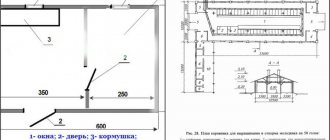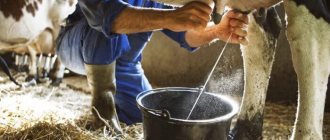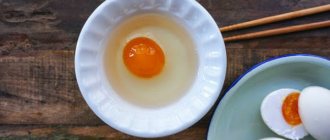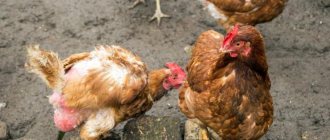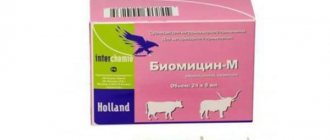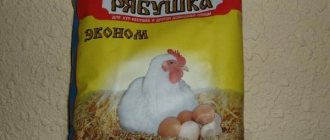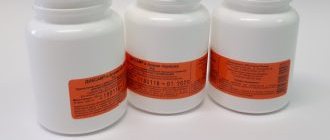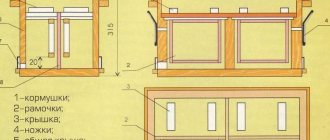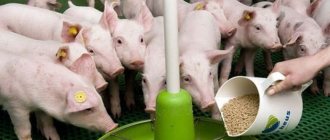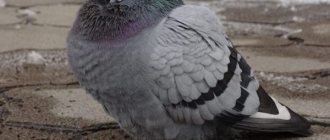The head is probably the cheapest part of a pork carcass. But by no means the most worthless, because it includes such delicacies as tongue, snout, ears. Feel free to take a whole pig’s head from the market, and we will tell you and show you in step-by-step photos how to cut it up correctly so that you can have a lot of delicious dishes on your table at an economical price.
In addition, thanks to this article you will learn what to cook from a pork head, and specifically from each part of it. And then you will no longer be able to pass by a product on the market that is so beneficial for the family budget and attractive to the stomach.
So, you have purchased a pig's head. Her appearance is often not at all appetizing, even repulsive. Don’t be alarmed, these are the pink faces of young piglets that are advertised on the Internet, but in reality pig heads are quite untidy. The most important thing is that the meat is fresh, the bristles on it are carefully singed, and blue stamps are affixed to the skin.
If you are going to freeze any part of the pork, it is not advisable to wash it at this stage. But cleaning with a metal dish sponge won’t hurt at all. Doesn't everything get wiped off? Don’t worry, once you cut your head, you can soak the piece for several hours, after which the washing process will be much easier. This is especially true for the ears and snout, which it is advisable to cut in order to thoroughly clean the internal holes from dirt.
The first stage of cutting will be cutting off the ears. Set them aside; you will need them to cook with porridge or potatoes, make brawn or traditional jellied meat, or an original salad of pig ears.
Cut off the flesh of the cheeks on both sides. These pieces with lard and tender meat are perfect for making fried meat, minced meat and cutlets, homemade sausage and lard boiled in onion skins.
The pulp from the forehead can be used in dishes that require pork with greasy streaks: these can be gravies, porridges, vegetables, cutlets, and, of course, homemade pork head sausage.
Just carry it with you.
Next, use a knife to separate the pulp from the chin. This part is best used as an additional product when rolling minced meat.
Now, turning the pig's head over, you can remove the tongue from the hole where the neck and chin used to be. This is a delicious delicacy, which is used to make aspic, salads, as well as other baked, fried and stewed dishes.
Please note that you will remove from your head not only the tongue itself, but also the perilingual part. It should be cut off; it will be used to prepare minced meat and jellied meat.
Starting from the corners of the mouth and continuing along the cheeks, we trim to make it easier to divide the head into two parts.
We separate the lower jaw from the head, opening the mouth wide with our hands, if necessary, trimming the meat fibers on the sides.
The lower jaw is also edible, but not all of it.
We cut off the bone plates with pieces of meat (they will make an excellent broth for soup), the gums (for minced meat), and throw away the teeth themselves.
It's Piglet's turn. Carefully separate it from the nasal bone with a knife. This is the most tender meat from the entire pork head. You can make any meat dish from it, but many people prefer to simply boil it with spices, since the snout is incredibly tasty on its own.
The remains of the skull can be placed in a large saucepan and immediately set to boil for subsequent preparation of jellied meat or brawn. And if you wish, you can cut it into three parts, separating the nose and splitting the skull in half. These shares are used in the same dishes.
If you still decide to split the skull, you can take out the brains and cook them separately; in some countries, such dishes are a special delicacy.
As you can already see, cutting up a pig's head is not at all difficult, but it is possible to prepare many delicious meat dishes for your family at a very bargain price.
The most accessible part of a pork carcass is the head, but you should not treat it with disdain. Knowing how to properly cut a pig's head, you can prepare a variety of dishes from it. Its parts such as the snout, cheeks, tongue and ears are especially valued. Some housewives also use pig brains to prepare delicacies. Rules for cutting and recipes for preparing a pork head will be presented in this article.
The process of cutting a pig's head (step-by-step instructions)
So, you have at your disposal a not-so-appetizing-looking pig’s head. The appearance of this part of the mascara is not very attractive, but that is not the main thing. It is important that the meat is fresh and the bristles are well singed. It is not recommended to wash your hair to keep the product fresh longer, but it is advisable to clean it. This is done using a stiff brush or metal mesh for cleaning dishes, scraping off dirt from each area.
The inside of the ears and nasal passages of the ear should be treated especially carefully; a lot of dirt usually accumulates there. To get there you have to make small cuts. If the dirt is difficult to wipe off, no problem - then, before cooking, the meat is soaked, which makes the cleaning process much easier.
Instructions for cutting a pork head step by step:
- First, use a sharp knife to separate the ears.
- At the second stage, carefully cut off the flesh of the cheeks, moving towards the patch.
- Separate the meat from the frontal part.
- Cut the flesh from the chin.
- We remove the tongue from the hole formed in the chin area.
- We cut off the perilingual part from the tongue (it is used to prepare jellied meat or added to minced meat).
- Now you need to divide the head into 2 parts - lower and upper, cutting the area connecting the jaws with a knife.
- We cut off a patch from the top of the head - this is a real delicacy.
- We separate the jaws and throw them away.
- The remaining parts of the head - bones with meat - are divided into fragments (they are useful for cooking first courses).
- By splitting the top of the head, the brain is removed - it can be used to make pate.
How to cut a pig's head
An unpleasant and most labor-intensive stage of the entire process of cooking jellied meat. It is the same for all recipes, so it would be logical to devote a separate section to this.
Procedure:
- Cut out eyes and ears.
- Make cuts in the ears, remove dirt from them, and singe the bristles with a torch.
- Cut off both cheeks. The lard can be separated immediately or left, then the jellied meat will be greasy.
- Remove meat from the frontal part of the head.
- Cut off soft tissue from the lower jaw.
- Pull out the tongue from the side where the neck was. Cut off along with the perilingual part.
- Make cuts from the corners of the mouth along the cheeks. Pull down and separate the lower jaw from the pig's head, trimming the muscle fibers where necessary. Cut off soft tissue (skin, gums, meat) from bones with teeth.
- Cut off a patch from the nose of the skull. Clean the inside of the nostrils well with a knife.
The cutting of the pig's head is almost complete. Pieces of meat with skin, ears, and snout are carefully scraped with a knife or steel wool, removing all dirt.
The back of the tongue is cut off. It can be used for jellied meat, but the tongue itself is better prepared separately.
If there is a container of suitable size, the skull with the remaining meat is boiled whole. But, as a rule, the head is chopped (sawed with a hacksaw) first along the frontal part in half, and then into another 3-4 pieces.
Brains don't go cold. They are carefully removed from the severed skull. How to use this part of the pig's head is a matter of taste. The brains can be fried, boiled, stewed (believe me, it’s delicious) or given to dogs, that is, thrown away.
There is another, simpler cutting option. The pork head is soaked overnight in cold water, then washed and dirt removed. If necessary, singe the bristles with a torch. Afterwards, the ears and snout are cut off, the eyes are cut out, and the tongue is taken out. The head is cut in half or into 4 parts and in this form they cook jelly from it.
The video shows the entire process of cutting a pig's head:
Classic recipe
| Ingredients | Quantity |
| half a pig's head - | 4 kg |
| onion - | 1 PC. |
| carrot - | 1 PC. |
| Bay leaf - | 3 pcs. |
| black peppercorns - | 6 pcs. |
| garlic - | 4 cloves |
| salt - | approximately 1 tbsp. l. with a slide |
| Cooking time: 1200 minutes | Calorie content per 100 grams: 322 Kcal |
This is a basic recipe that can be used to prepare various variations of pig's head jellied meat. There is nothing complicated about it; the products used are standard. The only catch is that the cooking process lasts at least 6 hours.
Recipe step by step:
- Pork (half a head whole or pieces obtained during cutting) is placed in a large saucepan. Fill completely with water. They put it on fire. Cook after boiling for 5 minutes. The water is drained and the meat is washed.
- The head is again immersed in the pan. Pour water so that the liquid covers the meat by 5 cm. Place the jellied meat on the fire.
- After boiling, reduce the flame to low. Cook covered for 6 hours. At the beginning of boiling (the first hour), periodically remove the scale.
- After 4 hours of cooking, add whole peeled carrots and washed onions in their peels into the broth.
- After another 60 minutes, salt the broth, add bay leaf and pepper.
- The cooked pork head is not immediately removed from the pan. It is allowed to cool slightly and only then placed on a wide dish (in a bowl).
- When the temperature drops enough that it does not burn your hands, the head is disassembled into pieces. Clean meat is placed in one container, skin and cartilage in another. The bones are thrown away.
- Garlic is peeled and chopped. Mix with fiberized (finely chopped) meat. The skin and cartilage, who like these products in jellied meat, can also be finely chopped and added.
- The meat part of the jelly is placed in a bowl where the jellied meat will harden.
- Remove the boiled carrots from the cooled broth. Cut into thin rings and place in bowls on top of the pork and garlic.
- The broth is filtered through a double layer of gauze. Everything that remains (onion, bay, pepper) is thrown away.
- The strained broth is poured into molds with meat.
The cooled jellied meat is placed in the refrigerator to harden. In 8–10 hours the dish will be ready. When serving, the pork head jelly can be turned over onto flat plates or served in containers in which it has frozen. In gravy boats, serve the jelly with grated horseradish with beets, garlic-sour cream sauce, mustard, and spicy adjika.
Pork head recipes
All parts of the pork head are successfully used in cooking. Particularly popular are dishes made from the ears, snouts, cheeks and tongue of a pig. Let's look at some interesting recipes that are worth adding to your cookbook.
Pork cheeks in the oven
- cheeks – 1 kg;
- onion peel – 70-100 g;
- salt – 1 tablespoon;
- ground black pepper - to taste;
- peppercorns (allspice and black) – 3-4 pieces each.
- 3-4 garlic cloves;
- laurel leaf;
- vegetable oil – 20 ml.
Soak the pork cheeks in cold water for 2 hours, thoroughly clean them with a brush. Place a saucepan with 2 liters of water on the stove, add salt, onion peels, and bring to a boil. After boiling, put the cheeks in the pan, add spices - bay leaf, peppercorns.
You need to cook the meat for about an hour, until almost done. At the end of the cooking process, remove the cheeks from the pan and allow to cool slightly. Meanwhile, chop the garlic, mix it with ground pepper and a small amount of salt and oil. Rub the meat with this mixture, place it in a baking dish and put it in the oven for 20-30 minutes, heating it to 180 degrees.
Piglets with vegetables in sour cream sauce
- pork snouts – 800 g;
- onion heads – 3;
- zucchini - 1 fruit;
- medium fat sour cream - a glass;
- bay leaf – 2 pcs.;
- salt to taste;
- allspice in the form of peas – 6 pcs.;
- ground black pepper – 0.5 tsp;
- vegetable oil – 20 ml.
First, the patches should be soaked and cleaned well. Then they are cut into 2 parts and sent to a pan of water to cook. After boiling, the first broth is drained and cooking is continued in clean water. Add salt to it (less than a tablespoon per liter), peppercorns, and a bay leaf. Pork snouts are boiled for one and a half hours until soft.
The finished snouts are discarded in a colander, leaving a little broth, allowed to drain and cool, and then cut into pieces. Heat the oil in a frying pan and add the onion, cut into half rings. When it changes color to golden, add zucchini cut into large cubes. After frying the vegetables, place the snouts in the frying pan and lightly brown them. Now you can add sour cream, salt to taste, ground pepper. If you want to make the gravy more liquid, you should add a little broth in which the snouts were cooked. Cover the pan with a lid and simmer the contents over low heat for 10 minutes.
Advice. You can serve this dish with baked or boiled potatoes or rice as a side dish.
Brain salad
Pork brains are an offal widely used in cooking. You can make a delicious salad from it.
- pork brains – 600 g;
- salt, bay leaf, peppercorns (for cooking);
- 4 eggs;
- onion – 1;
- fresh cucumber – 1;
- mayonnaise – 2 tbsp. l.;
- mustard – 1 tsp;
- lemon juice – 10 ml.
Pig brains for salad
We send the brain to boil in salted water with the addition of salt and spices. After boiling, reduce the heat to medium, wait 10-15 minutes, after which we remove the offal from the broth and cool. Cut the brains into medium cubes. Boil the eggs and chop them in a convenient way. Cut the cucumber into small oblong pieces. Peel the onion, chop into quarters of rings, pour in lemon juice. Marinate the onion slices for 15 minutes. In a salad bowl, mix brains, cucumber, eggs and onions, after draining the marinade. Season the dish with mayonnaise and mustard, garnish with green onions.
Advice. To decorate the finished salad, crush it with chopped green onions.
You shouldn’t ignore the pig’s head; all its parts, except the jaws, can be used in cooking, the main thing is to cut it correctly. This part of the carcass contains a lot of cartilaginous tissue, which is suitable for cooking jellied meat and preparing brawn, and the tongue, brains and cheeks are considered a delicacy.
This article will tell you how to cut a pig's head quickly and without hassle. Thanks to our tips, you can diversify your family's diet and save a significant part of your budget. The pig's tongue, brain, cheeks, ears and snout are among the delicacies. And even though in its raw form this part of the carcass does not look entirely appetizing, the taste of the finished dish completely compensates for this shortcoming. Do not be afraid that cutting will be accompanied by difficulties - even a novice housewife can do this process.
Rules for cutting pork carcass
Cutting parts of a pig carcass can be stored for a long time and sold separately. All parts of the pork body differ in taste, fat content and lard content.
The varietal cutting of a pork body is divided into two important stages. They include:
- Bleeding;
- The process of dividing into a separate part.
Timely removal of blood mass from a fresh carcass improves the taste and appearance of meat products. Experienced butchers claim that you can quickly get rid of blood by cutting the throat of a live animal. It is pre-laid on its side and tightly fixed.
However, in the future, the pork carcass must be suspended by the hind limbs using special equipment. This will increase the speed of blood flow from the cavity of large veins and arteries. If you hit a pig in the chest, you won’t be able to get rid of the excess blood quickly. A wound to the ribs provokes the appearance of many blood clots. Subsequently, the gutted body of the pig is soaked in cold water.
Before cutting, it is necessary to prepare a room where various manipulations to divide the pork carcass will be carried out.
Attention must be paid to a tool that will allow you to cope with the meat and bones of the animal.
Preparation of the workplace
There are certain ways to properly cut a pig's head. Using them, you can quickly disassemble it into parts. Naturally, it is better for a man to do the butchering, since physical strength is required. However, even a fragile woman can do this task. Tools you will need are a sharp butcher knife and a small kitchen hatchet.
Cutting a pig's head begins with preparing the workplace. It’s good if you have a spacious room with a minimal amount of furniture - then the cleaning process will take less effort and time. A prerequisite is that everything must be clean.
Next you need to take care of the working surface. The main requirement is stability and the ability to withstand strong blows with an axe. Immediately before cutting, the tabletop should be covered with clean oilcloth or cloth. Newspapers are not entirely suitable for these purposes, since printing ink can ruin the meat.
Additionally, you will need a large container of clean, salted water and several bowls or pans in which to place pork cheeks and other parts of the head. During the cutting process, small particles of bones and blood will fly out from under the ax, so work clothes should be appropriate.
Remember that the cleanliness of the premises and the neatness of the butcher himself directly affects the health of those who will eat meat from pig heads.
To make the room less dirty, you can use a sharp hacksaw instead of an ax.
Let's start cutting
Boiled pig snout will be an excellent alternative to expensive sausage, and the cheek is perfect for making smoked meats. But first you should do the following:
- the pork head is doused with boiling water and washed thoroughly using a metal scraper (if bristles are detected during inspection, it must be scorched with a gas burner);
- Using a sharp knife, the eyes are removed, then the tongue is carefully cut out;
- chop the fresh pig's head into pieces (if you plan to cook the brains, it is better to immediately chop the skull in half and collect the valuable delicacy in a separate container);
- parts of the skull must be “removed” from the cheeks and ears by cutting them off with a knife;
- excess fat is trimmed off and used as animal feed if desired;
- separate the lower part from the upper (cut with a knife at the place where the jaws meet);
- then the head, cut into small pieces, is soaked in salted water (such soaking will make the meat more juicy);
- After 4-8 hours of soaking, you can start preparing meat delicacies.
The container used should be large enough so that the liquid completely covers the meat and the water is cold.
Boning requires skill
Pork head meat is a valuable but not rare product. To ensure that the work of deboning them in production is truly profitable, mechanical and automatic lines are used, which can significantly reduce the cost of human labor and significantly speed up the meat processing process.
Boning a pig's head involves separating the soft tissue from the bone for further processing of the meat. For example, this is how minced meat is prepared for sausage and some types of semi-finished products.
For private use there is no need to purchase and install an automatic line. An experienced deboner can disassemble one head in an average of three minutes. Of course, to achieve such high results, you need to train a lot. But, in general, there is nothing special or complicated in this work.
If you decide to start deboning the heads yourself, then the first stages completely repeat the cutting instructions - washing, cleaning, removing eyes and ears. tongue extraction. Only if in the first case the meat with bones is sent for soaking, then when deboning you need to try to cut it off as efficiently as possible.
Remember that the less soft tissue remains on the bone, the better the deboning process. And speed will definitely come with experience.
You will find more information on this topic in the article “About deboning a pork carcass.”
If you liked the article, please like it.
Tell us in the comments if you have ever cut up a pig's head.
Calorie content Pressed pork head meat. Chemical composition and nutritional value.
Nutritional value and chemical composition of “Pressed pork head meat.”
The table shows the nutritional content (calories, proteins, fats, carbohydrates, vitamins and minerals) per 100 grams of edible portion.
| Nutrient | Quantity | Norm** | % of the norm in 100 g | % of the norm in 100 kcal | 100% normal |
| Calorie content | 302 kcal | 1684 kcal | 17.9% | 5.9% | 558 g |
| Squirrels | 8 g | 76 g | 10.5% | 3.5% | 950 g |
| Fats | 30 g | 56 g | 53.6% | 17.7% | 187 g |
| Water | 54.2 g | 2273 g | 2.4% | 0.8% | 4194 g |
| Ash | 1 g | ~ | |||
| Vitamins | |||||
| Vitamin B1, thiamine | 0.6 mg | 1.5 mg | 40% | 13.2% | 250 g |
| Vitamin B2, riboflavin | 0.16 mg | 1.8 mg | 8.9% | 2.9% | 1125 g |
| Vitamin B5, pantothenic | 0.5 mg | 5 mg | 10% | 3.3% | 1000 g |
| Vitamin B6, pyridoxine | 0.4 mg | 2 mg | 20% | 6.6% | 500 g |
| Vitamin B9, folates | 4.4 mcg | 400 mcg | 1.1% | 0.4% | 9091 g |
| Vitamin E, alpha tocopherol, TE | 0.5 mg | 15 mg | 3.3% | 1.1% | 3000 g |
| Vitamin RR, NE | 6.7 mg | 20 mg | 33.5% | 11.1% | 299 g |
| Niacin | 2.8 mg | ~ | |||
| Macronutrients | |||||
| Potassium, K | 316 mg | 2500 mg | 12.6% | 4.2% | 791 g |
| Calcium, Ca | 8 mg | 1000 mg | 0.8% | 0.3% | 12500 g |
| Magnesium, Mg | 27 mg | 400 mg | 6.8% | 2.3% | 1481 g |
| Sodium, Na | 64 mg | 1300 mg | 4.9% | 1.6% | 2031 |
| Sera, S | 220 mg | 1000 mg | 22% | 7.3% | 455 g |
| Phosphorus, P | 182 mg | 800 mg | 22.8% | 7.5% | 440 g |
| Chlorine, Cl | 48.6 mg | 2300 mg | 2.1% | 0.7% | 4733 g |
| Microelements | |||||
| Iron, Fe | 1.9 mg | 18 mg | 10.6% | 3.5% | 947 g |
| Yod, I | 6.6 mcg | 150 mcg | 4.4% | 1.5% | 2273 g |
| Cobalt, Co | 8 mcg | 10 mcg | 80% | 26.5% | 125 g |
| Manganese, Mn | 0.03 mg | 2 mg | 1.5% | 0.5% | 6667 g |
| Copper, Cu | 100 mcg | 1000 mcg | 10% | 3.3% | 1000 g |
| Molybdenum, Mo | 13 mcg | 70 mcg | 18.6% | 6.2% | 538 g |
| Nickel, Ni | 12.3 mcg | ~ | |||
| Tin, Sn | 75 mcg | ~ | |||
| Fluorine, F | 69.3 mcg | 4000 mcg | 1.7% | 0.6% | 5772 g |
| Chromium, Cr | 13.5 mcg | 50 mcg | 27% | 8.9% | 370 g |
| Zinc, Zn | 2.07 mg | 12 mg | 17.3% | 5.7% | 580 g |
| Essential amino acids | |||||
| Arginine* | 1.03 g | ~ | |||
| Valin | 1.04 g | ~ | |||
| Histidine* | 0.67 g | ~ | |||
| Isoleucine | 0.8 g | ~ | |||
| Leucine | 1.32 g | ~ | |||
| Lysine | 1.49 g | ~ | |||
| Methionine | 0.41 g | ~ | |||
| Methionine + Cysteine | 0.65 g | ~ | |||
| Threonine | 0.8 g | ~ | |||
| Tryptophan | 0.23 g | ~ | |||
| Phenylalanine | 0.72 g | ~ | |||
| Phenylalanine+Tyrosine | 1.3 g | ~ | |||
| Nonessential amino acids | |||||
| Alanin | 0.95 g | ~ | |||
| Aspartic acid | 1.58 g | ~ | |||
| Hydroxyproline | 0.2 g | ~ | |||
| Glycine | 0.88 g | ~ | |||
| Glutamic acid | 2.65 g | ~ | |||
| Proline | 0.63 g | ~ | |||
| Serin | 0.71 g | ~ | |||
| Tyrosine | 0.59 g | ~ | |||
| Cysteine | 0.24 g | ~ | |||
| Sterols (sterols) | |||||
| Cholesterol | 60 mg | max 300 mg | |||
| Saturated fatty acids | |||||
| Saturated fatty acids | 10.2 g | max 18.7 g | |||
| 14:0 Miristinovaya | 0.37 g | ~ | |||
| 15:0 Pentadecane | 0.02 g | ~ | |||
| 16:0 Palmitinaya | 6.31 g | ~ | |||
| 17:0 Margarine | 0.1 g | ~ | |||
| 18:0 Stearic | 3.33 g | ~ | |||
| Monounsaturated fatty acids | 13.14 g | min 16.8 g | 78.2% | 25.9% | |
| 14:1 Myristoleic | 0.01 g | ~ | |||
| 16:1 Palmitoleic | 0.96 g | ~ | |||
| 18:1 Oleic (omega-9) | 11.8 g | ~ | |||
| Polyunsaturated fatty acids | 3.11 g | from 11.2 to 20.6 g | 27.8% | 9.2% | |
| 18:2 Linolevaya | 2.8 g | ~ | |||
| 18:3 Linolenic | 0.19 g | ~ | |||
| 20:4 Arachidonic | 0.12 g | ~ | |||
| Omega-3 fatty acids | 0.19 g | from 0.9 to 3.7 g | 21.1% | 7% | |
| Omega-6 fatty acids | 2.92 g | from 4.7 to 16.8 g | 62.1% | 20.6% |
The energy value of pressed pork head meat is 302 kcal.
Primary Source: Created in the application by the user. Read more.
** This table shows the average levels of vitamins and minerals for an adult. If you want to know the norms taking into account your gender, age and other factors, then use the “My Healthy Diet” application.
What you will need
Not every housewife is ready to try her culinary skills in preparing dishes from parts of a pig's head. The thing is that the appearance of a pig's head cannot be called appetizing and attractive. Most people don't want to spend their time and effort cutting up a pig's head, and they don't even think about how easy this procedure can be with the right approach.
Don't want to buy a pig's head because you don't know what can be made from it? Open any cookbook and see how many incredibly tasty and interesting dishes can appear on your table. This includes jellied tongue, saltison, homemade sausage, jellied meat, roll, baked tongue, pressed meat from a pig's head and many other interesting and original dishes.
So, first of all, you need to make sure the product offered by the seller or farmer is fresh. The meat should be fresh and have the appropriate smell, the bristles should be well singed, and there should be marks on the skin in the form of blue stamps, indicating that this product has passed a quality test. Some sellers and farmers provide a service such as butchering a pig's head on site. This option is convenient because you buy a whole head, which has already been correctly disassembled into parts.
What should you do if you bought a whole pig’s head and don’t know how to cut it? First of all, prepare the place where you will cut the pig's head. It is optimal for this to be a clean room with a minimum amount of furniture and other items.
Please note that the table must be strong and stable, able to withstand blows from an ax. You can protect the table from mechanical damage and stains using ordinary cloth or oilcloth. The last option (we are talking about oilcloth) is considered more practical and convenient.
Don't forget to cover nearby pieces of furniture with fabric, oilcloth or newspaper.
Using this method, you will save yourself from unnecessary work after finishing cutting the pig's head. Otherwise, you will have to spend a lot of time cleaning and laundering the furniture. During the work process, you may need a brush with stiff bristles or a “scourer” made of metal shavings, an ax, a hacksaw and several sharpened kitchen knives. Wear an apron over your work clothes. Have a waste bucket and a couple of large pots and bowls ready.
How to cut a pig's head instructions with step-by-step photos
The head is probably the cheapest part of a pork carcass. But by no means the most worthless, because it includes such delicacies as tongue, snout, ears. Feel free to take a whole pig’s head from the market, and we will tell you and show you in step-by-step photos how to cut it up correctly so that you can have a lot of delicious dishes on your table at an economical price.
In addition, thanks to this article you will learn what to cook from a pork head, and specifically from each part of it. And then you will no longer be able to pass by a product on the market that is so beneficial for the family budget and attractive to the stomach.
So, you have purchased a pig's head. Her appearance is often not at all appetizing, even repulsive. Don’t be alarmed, these are the pink faces of young piglets that are advertised on the Internet, but in reality pig heads are quite untidy. The most important thing is that the meat is fresh, the bristles on it are carefully singed, and blue stamps are affixed to the skin.
Step-by-step instruction
The preparatory stage is completed and you can begin the main part of the procedure for cutting the pig's head. To avoid various inaccuracies, we will try to tell you in detail how to cut a pig's head correctly.
- You can cut a pig's head only after thoroughly cleaning it. To do this, you need to scald the boar's head with boiling water, scrape off hair and various dirt with a knife, scorch it and wash it thoroughly again. When working, use a brush or “scourer” made from metal shavings.
- Remove the eyes. Cut out the tongue, but don’t throw it away - you can make a delicious aspic from it.
- Next you need to cut the skull. It is advisable to do everything carefully so as not to damage the brains, which can also be used to prepare various main courses and snacks. You should work with an ax and a hacksaw. Following the recommendations of experienced butchers, to ensure that the brains remain intact, it is better to use a hacksaw rather than an ax.
- Cut each of the resulting parts in half.
- Separate the ears, from which you can then prepare traditional jellied meat or brawn, and also try them in the now popular pork ear salads.
- Cut off the cheeks. These pieces of pork head with tender meat and a small amount of lard can be used to prepare minced meat for cutlets or homemade sausage.
- Using a sharp knife, carefully remove the meat from the chin and frontal part of the head. It is better to cut off excess fat and discard it. Cut off the bone plates from the lower jaw, which will make a tasty and rich broth. Remove teeth and discard. Let's move on to the most delicious part of the pig's head - this is the snout. It can be used to prepare meat dishes or boiled with the addition of various spices.
- The remaining meat and remains of the skull should be soaked in lightly salted water. Periodically, the water is drained and replaced with clean water. This procedure must be repeated until the water stops turning red. Now you can start processing the meat: pressing, grinding into minced meat, stewing or baking.
